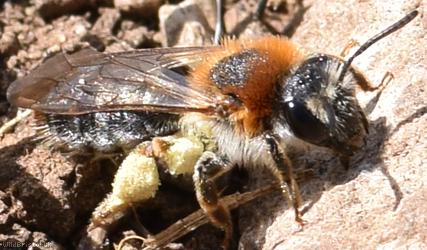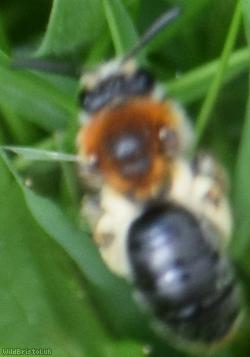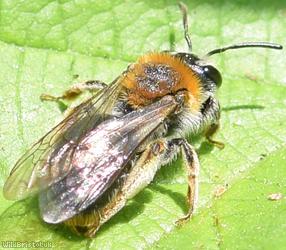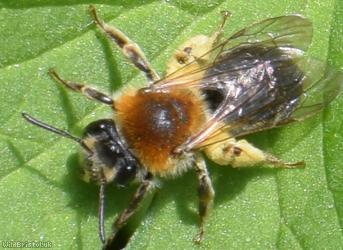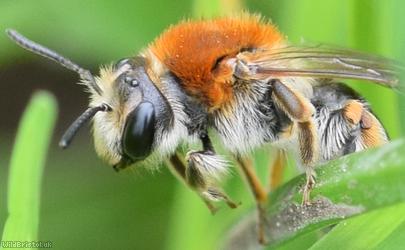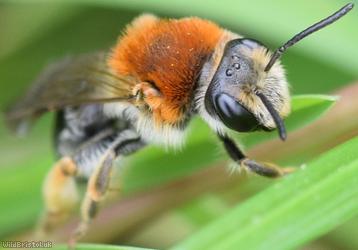Orange-tailed Mining Bee - Andrena haemorrhoa
Favourite Photos
Species Description
Widespread but local throughout the UK though It is absent from much of Scotland. Habitat includes: Places with light soils (especially those that are south-facing) in sites such as gardens, parks, allotments, churchyards, playing fields, roadside verges, railway banks, slopes, coasts, cliffs, old quarries, wasteland etc. Length: 8 - 11 mm. Life story: Nesting occurs in scattered aggregations on Males can often be seen swarming around flowering Gorse and other small shrubs. Flight period: Late March to July. Diet: Nectar and pollen from a wide variety of flowers including: spring-blossoming shrubs, dandelions, umbellifers etc. It is the hosts of the Fork-jawed Nomad Bee (Nomada ruficornis). Other names include: Early Mining Bee.
